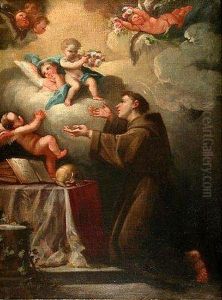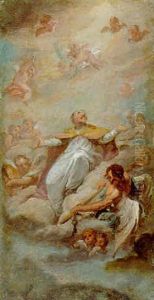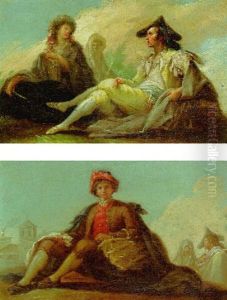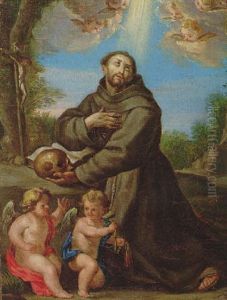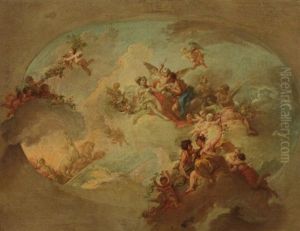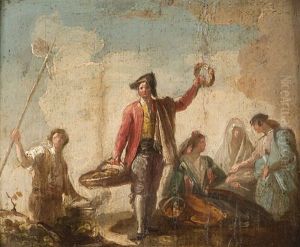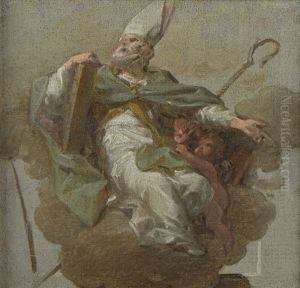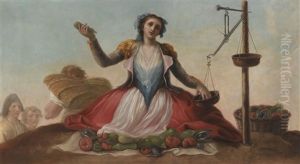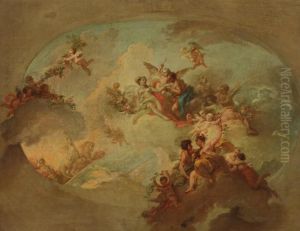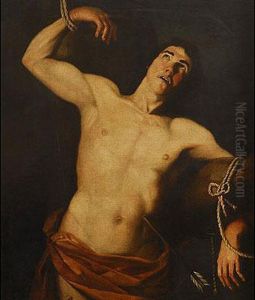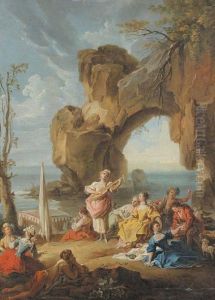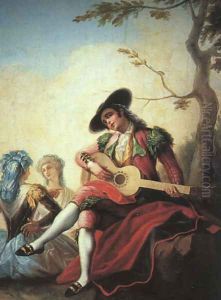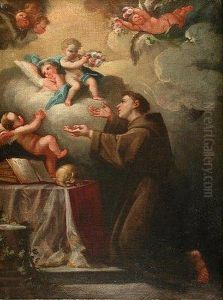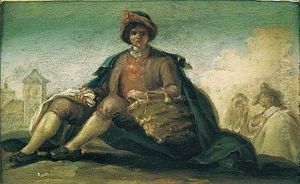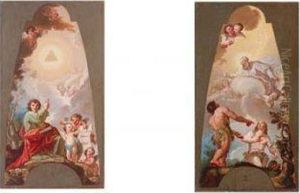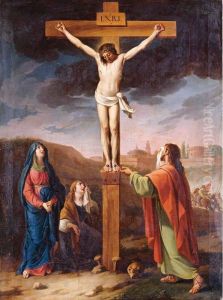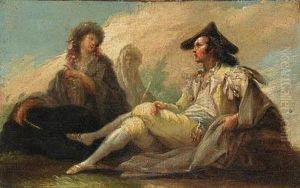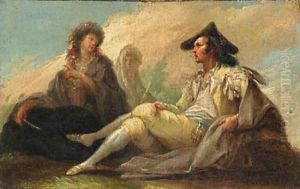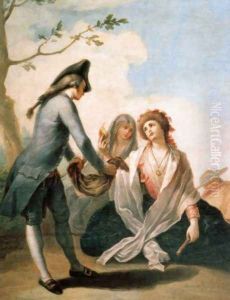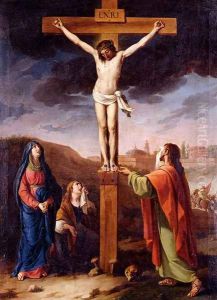Ramon Bayeu Y Subias Paintings
Ramón Bayeu y Subías was a prominent Spanish painter, born in 1746 in Zaragoza, Spain, into a family deeply involved in the arts. His brothers, Francisco Bayeu and Manuel Bayeu, were also well-regarded artists, making the Bayeu family a significant name in the 18th-century Spanish art scene. Ramón, like his brothers, initially trained at the Escuela de Bellas Artes in Zaragoza, where he developed a strong foundation in drawing and painting, showing early on a particular talent for capturing the subtle nuances of light and shadow, a hallmark of his later works.
Bayeu's artistic journey led him to Madrid, where he furthered his studies and became deeply influenced by the burgeoning Rococo style, marked by its lightness, grace, and decorative elements. In Madrid, he became closely associated with the Spanish Royal Court, which proved to be a pivotal point in his career. His association with his brother Francisco, who was already an established painter in the court, opened many doors for him, including the opportunity to work on projects for the Royal Tapestry Factory. These commissions were highly prestigious and allowed Ramón to showcase his adeptness at depicting both historical and genre scenes with elegance and a keen eye for detail.
Throughout his career, Bayeu y Subías undertook several significant commissions that solidified his reputation as a master painter. His works often reflected the Rococo's influence, yet he also embraced elements of Neoclassicism, particularly in his later years. This stylistic evolution showcased his versatility and ability to adapt to the changing tastes of the time. Among his notable works are his contributions to the decoration of the Royal Palace of Madrid and the Basilica of San Francisco el Grande, where his frescoes demonstrate his skill in composition and his ability to imbue his subjects with a sense of vitality and realism.
Despite his success, Ramón Bayeu y Subías' life was not without challenges. The political and social upheavals of late 18th-century Spain, combined with personal losses, including the death of his brother Francisco, impacted him deeply. He continued to work and receive commissions, but his later works reflect a more somber and introspective tone.
Ramón Bayeu y Subías passed away in 1793, leaving behind a legacy that, while perhaps overshadowed by his brother Francisco and other contemporaries, remains significant in the study of Spanish art history. His contributions to the Royal Tapestry Factory, his religious and genre paintings, and his role in the artistic circles of his time underscore his importance as an artist who bridged the Rococo and Neoclassical periods with finesse and originality.
